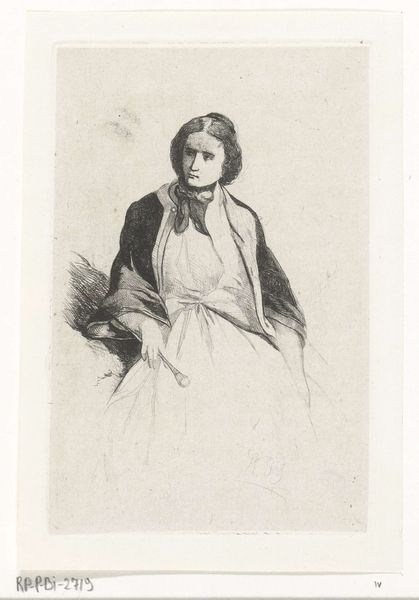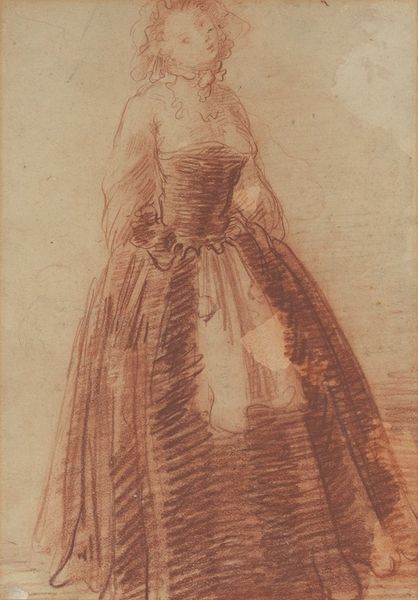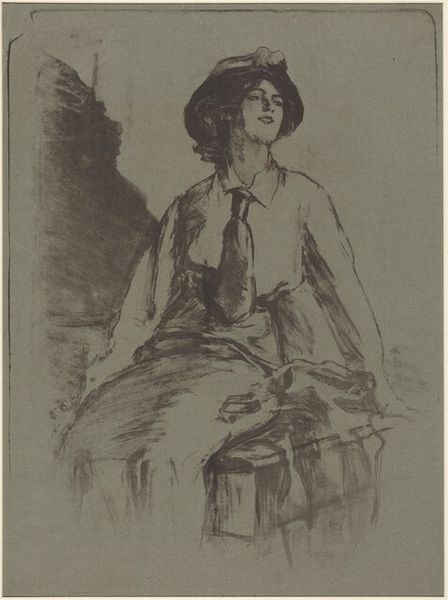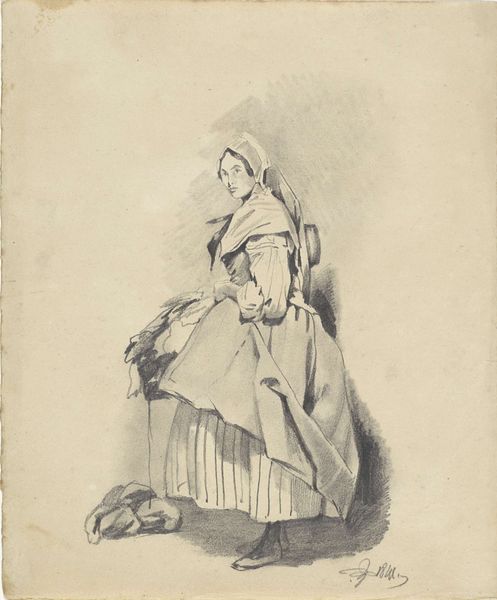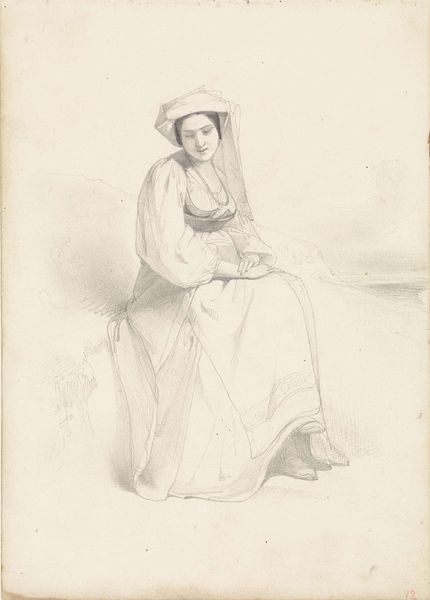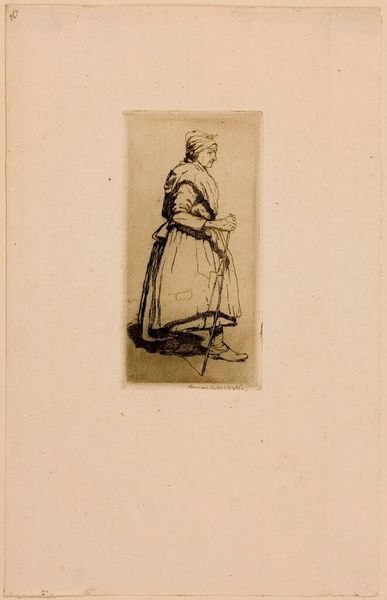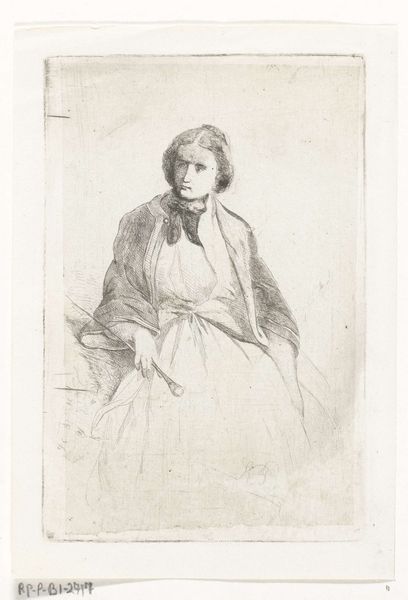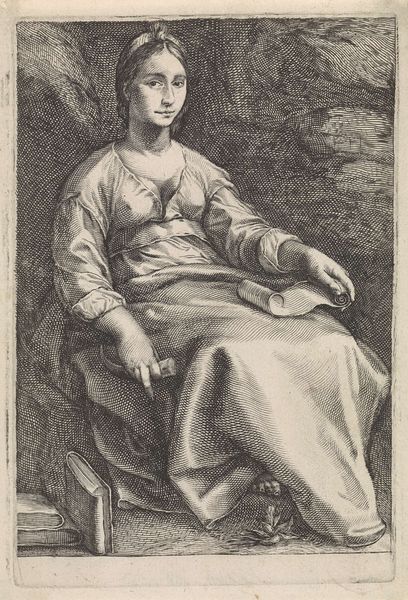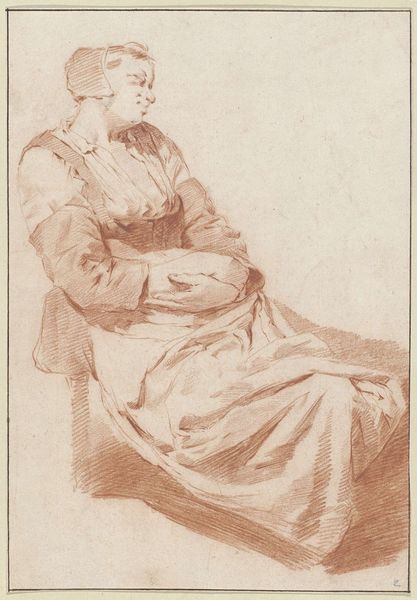
drawing, etching, intaglio
#
portrait
#
drawing
#
pen sketch
#
etching
#
intaglio
#
pencil sketch
#
realism
Copyright: Public Domain: Artvee
Curator: Oh, isn't she striking? This is James Abbott McNeill Whistler's etching, "Fumette," created around 1857. There's something so immediate about it. Editor: My first impression is melancholic. All those lines scratched onto the plate, giving her a shadowy vulnerability. And she's almost lost in those simple but heavy folds of fabric. It is an image created through material production, after all! Curator: Precisely. He’s capturing a feeling, an atmosphere more than just a likeness. It’s like a whisper of a person. It's remarkable he chose intaglio for it, I can imagine it's hard to control that much hatching. Editor: Well, think about etching in 19th-century Paris! The copper plate, the acid… Whistler wouldn't be breathing that in anymore if he was alive today, probably! Beyond his labor we need to remember that those materials were produced by other people. The textile that constitutes her garment was definitely woven by someone else as well. It’s interesting how the rapid proliferation of cheap cloth coincided with this movement of the "Realism" that she's also marked as representing. It’s an industrial shadow looming behind every "spontaneous" work of art. Curator: Maybe, but isn’t there also something profoundly intimate here? She looks straight at you. Editor: Definitely. But the fact is, printmaking was undergoing some profound changes during that time, too! This marks one step in that historical change. In the bottom left, there is text indicating Delâtre's printing studio which means Whistler did not produce every element himself. Etching democratized art. Think of Daumier producing lithographs for mass consumption, something truly different to consider than court-ordered portraits by painters. Curator: You're absolutely right, the process undeniably opened avenues for artists to share their visions, reach wider audiences. Editor: That tension is really what captures my attention here: the individual artistic labor mixing and depending on collaborative industrial materials and operations. Curator: I leave with this piece seeing a very personal emotional study reflected against an objective vision, mediated by production in its multiple forms. Editor: Yes! It gives us some space for critical engagement with those productive mediations to consider how to engage in those social changes ourselves, too.
Comments
No comments
Be the first to comment and join the conversation on the ultimate creative platform.
